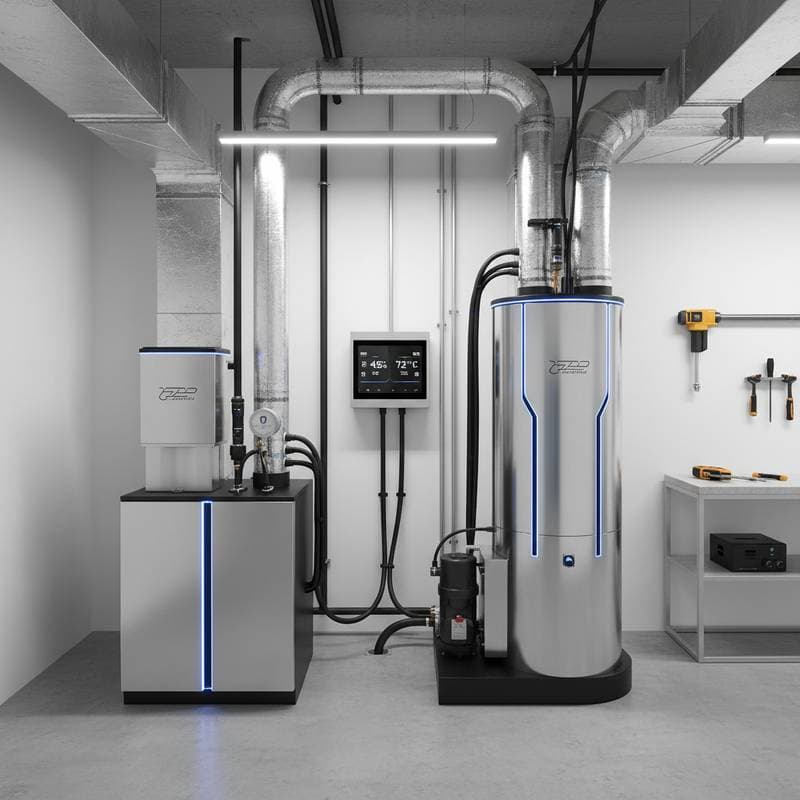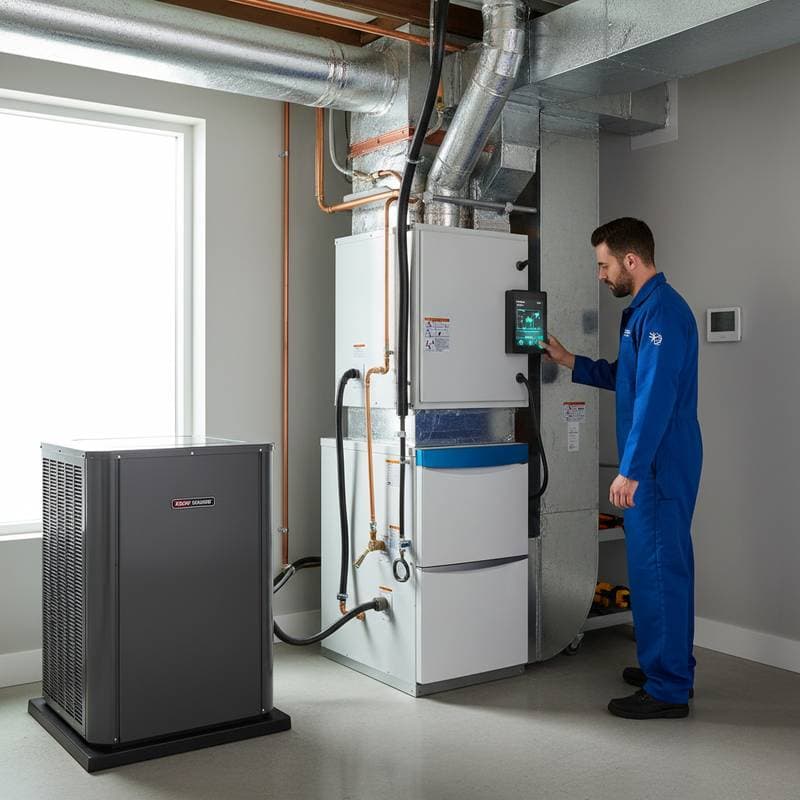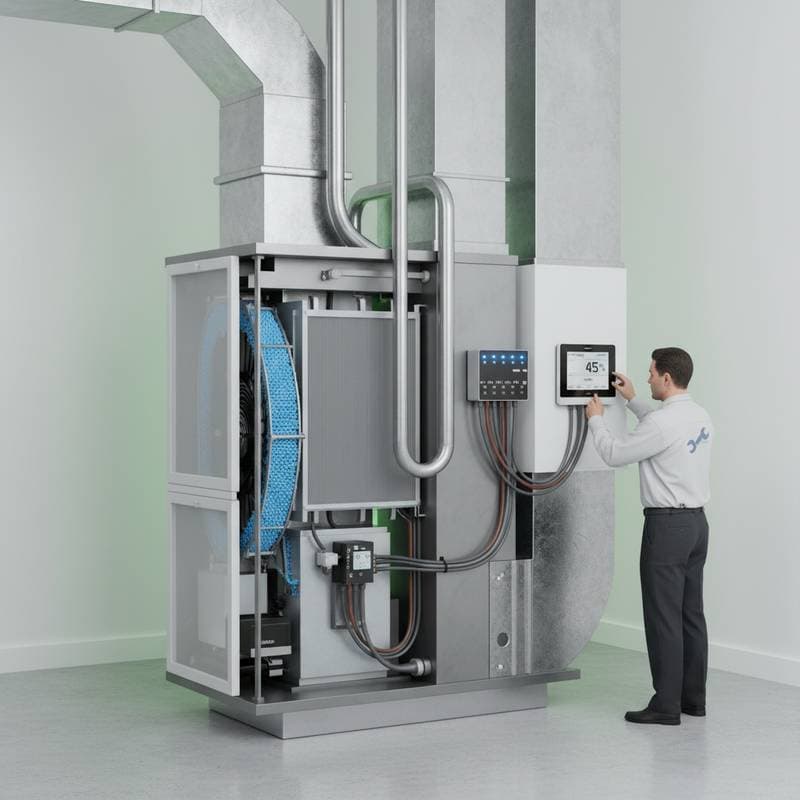Why Humidity Control Defines Indoor Comfort in 2025
Homeowners frequently adjust thermostats, replace filters, and seal ducts in pursuit of ideal indoor conditions. Yet discomfort persists, with air feeling sticky during summer or excessively dry in winter despite stable temperatures. Humidity control addresses this oversight, as balanced moisture levels significantly impact comfort, health, and energy use.
How Imbalanced Humidity Undermines Comfort and Increases Costs
Excessive humidity in warm climates transforms a 75-degree setting into an oppressive environment, prompting overuse of air conditioning. In contrast, low humidity during heating seasons leads to dry skin, static buildup, and structural damage to wooden elements like floors and cabinets. Studies on HVAC performance indicate that such imbalances raise energy consumption by 10 to 20 percent, as systems compensate for suboptimal air quality.
Field experience reveals that residents often ignore humidity until symptoms appear, such as persistent clamminess in humid regions or irritating dryness from forced-air systems. These conditions not only reduce daily comfort but also accelerate wear on HVAC components, leading to higher maintenance needs.
Integrating Advanced Systems for Optimal Humidity Management
Contemporary whole-home humidifiers and dehumidifiers maintain relative humidity between 40 and 50 percent, the range experts consider ideal for well-being and efficiency. View these tools as essential to a comprehensive climate plan rather than optional features.
Envision entering a space where air circulation feels refreshing without excess moisture or aridity. Your set temperature holds steady, free from the heaviness of humidity or the sting of dryness. Achieve this precision by incorporating humidity controls into your current HVAC infrastructure.
Proven Approaches to Achieving Balanced Indoor Air
Install Whole-Home Humidifiers to Counter Winter Dryness
Heating systems deplete indoor moisture as they operate, resulting in discomfort like sore throats and chapped skin. A whole-home humidifier integrates with the HVAC, releasing controlled water vapor into the airflow to restore balance.
This setup delivers several advantages:
- Elimination of static electricity and associated irritations
- Support for respiratory health through moistened airways
- Protection of wooden surfaces from warping and cracking
Select models with adjustable output to match your home's square footage and heating demands.
Deploy Dehumidifiers to Combat Summer Excess Moisture
In humid locales, standard air conditioners may cool effectively but fail to extract sufficient moisture, fostering a muggy atmosphere. Dedicated dehumidifiers pair with cooling units to condense and remove water from the air prior to distribution.
Primary benefits encompass:
- Moisture reduction without unnecessary cooling, preserving energy
- Enhanced air purity by inhibiting mold and allergen proliferation
- Decreased load on air conditioners, extending equipment durability
Opt for units sized appropriately for your regional climate and home layout to maximize effectiveness.
Leverage Smart Sensors and Thermostats for Automated Regulation
Advanced thermostats equipped with humidity sensors monitor conditions in real time and adjust operations accordingly. These systems eliminate the need for constant oversight, ensuring steady levels through automated responses.
Success depends on regular calibration to align with your preferences. Integration with smartphone applications enables remote monitoring of humidity and temperature patterns, facilitating proactive adjustments.
Schedule Routine Maintenance to Sustain System Efficacy
All humidity components require periodic attention to function optimally. Perform filter replacements, reservoir cleanings, and drainage inspections biannually to prevent issues.
Neglect can lead to bacterial growth in humidifiers or blockages causing leaks that compromise nearby structures. Engage professionals for annual tune-ups to verify alignment with operational standards.
Key Factors to Evaluate Prior to System Installation
Assess your HVAC's current capabilities, including capacity and insulation effectiveness, alongside ventilation patterns. A certified technician's inspection determines compatibility for adding humidification or dehumidification features.
Installation expenses depend on residence size and equipment complexity, typically ranging from $600 to $1,200 for humidifiers and $1,500 to $3,000 for dehumidifiers. Factor in long-term returns, as optimized humidity permits thermostat settings that reduce bills by 5 to 10 percent yearly.
Prioritize safety by selecting licensed installers who adhere to building codes. They manage water lines, electrical connections, and drainage to avoid hazards like flooding or short circuits.
Enhancing Health and Home Longevity Through Humidity Balance
Proper humidity safeguards against health risks, such as mold from high moisture or allergy aggravation from low levels. It fosters an environment that supports respiratory ease and minimizes irritants.
HVAC specialist Carla Jensen notes, "When homeowners grasp humidity's role, they attain genuine comfort. Temperature represents only part of the puzzle." Observations from extensive service work confirm this: balanced moisture streamlines overall system performance.
Steps to Implement Humidity Solutions Today
Address seasonal discomfort by consulting a qualified HVAC professional for a tailored evaluation. Identify suitable whole-home systems and integrate maintenance protocols to secure enduring benefits.
Transform your living space into one that promotes vitality and efficiency. Balanced humidity elevates air quality, preserves assets, and delivers consistent comfort throughout the year.



